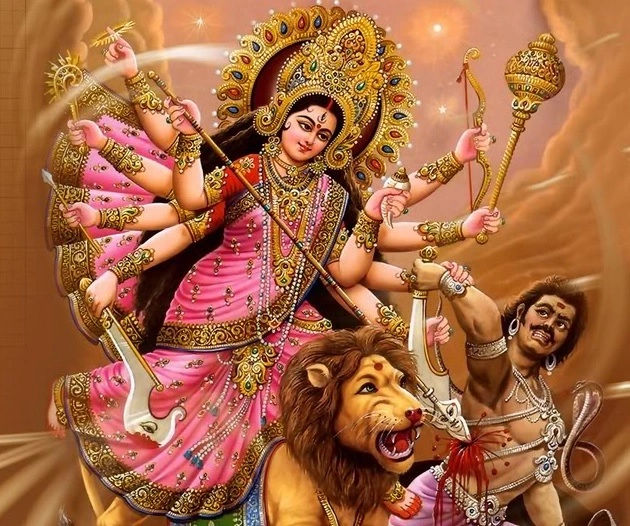

Goddess Durga
Today is Dussehra or Vijayadashami as many call it. Well actually, in North Indian states it’s called Dussehra while in West Bengal it’s called Vijayadashami.
It is that time of year when the well-known Ramlila is performed, gorgeous fairs are held, crowds swarm to see Ravan effigies burst into flames, and the aroma of traditional sweets fills the air. Dusshera falls on the tenth day of Sharada Navratri, however, despite the fact that celebrations and cultural practices vary according to the location in India’s culturally rich country, the festival’s fabric that binds everyone together remains.
History:
Dussehra symbolises the triumph of good over evil, and it is tied to two stories. After a fierce battle that lasted more than nine days, it is said that Maa Durga conquered Mahishasura on this day. According to another tale, Dussehra is observed to commemorate Lord Rama’s victory over Lanka’s ten-headed evil king, Ravana.
Significance:
The tenth day of Navratri, which comprises nine days dedicated to honouring each form of Goddess Durga, is Dussehra. Vijayadashami, on the other hand, is the day of victory. While some connect it to the famous Ramayana conflict, others do it to remember Goddess Durga’s triumph over the demonic Mahishasura.
In some regions of the country, Dussehra–also known as Vijayadashami or Dasain – makes way for the Diwali celebrations.
Twenty days after Dussehra, one of the most significant and widely celebrated festivals, the festival of lights – Diwali, commemorates Lord Rama’s return home following his victory over Ravana. However, the main message of the Dussehra festival is that of good triumphing over evil, and it is on this day that people pray for prosperity and good health.
Celebrations:
The nine days of Navratri culminate in the killing of Ravana and the burning of his life-size effigy at the Ramlila, together with those of Meghnad and Kumbhakaran, on the day of Dussehra or Vijayadashami when the holiday is celebrated with great grandeur.
As each of Ravana’s heads represents a different negative attribute, Dussehra also represents purging oneself of sins or undesirable traits.
In several southern Indian states, Shami Puja is also known as Banni Puja and Jammi Puja. Devotees wish Maa Durga farewell on Dashami, and the visarjan is performed either at Aparahna time or Pratahkala while Dashami Tithi is in effect.
The tenth day is also known as Vijayadashmi when Maa Durga’s idol is submerged in water in the hopes that she will keep an eye on them and fend off all misfortunes and evils. Vijayadashmi and Dussehra commemorate the triumph of good over evil, and worshippers celebrate the festivals by indulging in various foods with their loved ones.
US President Donald Trump on Saturday (US local time) called the continuation of the trial…
Protestors in Serbia took to the streets of Belgrade and demanded an early election, as…
The Ministry of External Affairs (MEA) on Sunday strongly rejected the Pakistani Army's claims, where…
Indian Army strengthens ties with Russian Land Forces at the 4th Indo-Russian Inter-Governmental Commission (IRIGC)…
The Indo-French Joint Military Exercise SHAKTI-VIII continues to strengthen operational interoperability and mutual cooperation between…
Prime Minister Narendra Modi attended the centenary celebrations of the revered Jain spiritual leader Acharya…